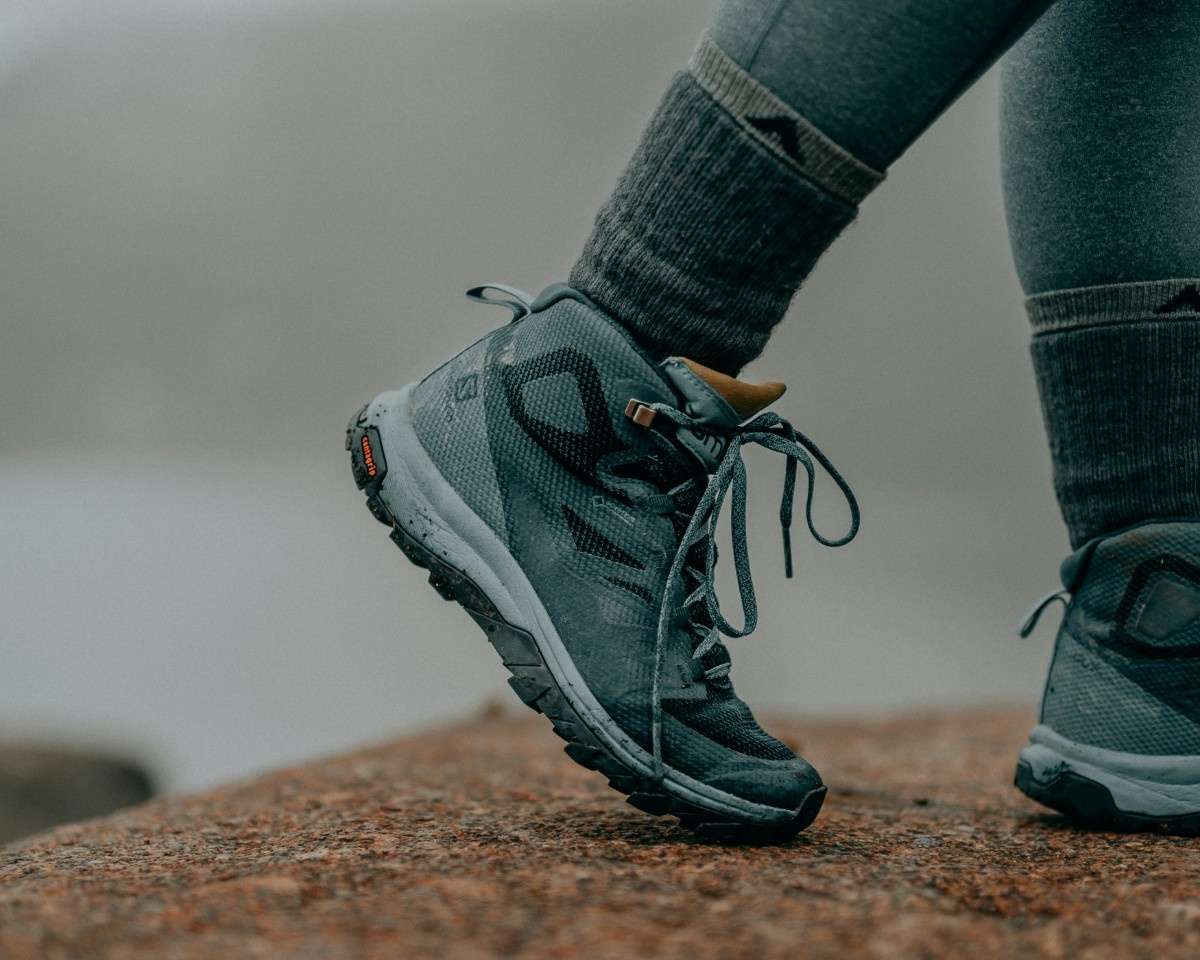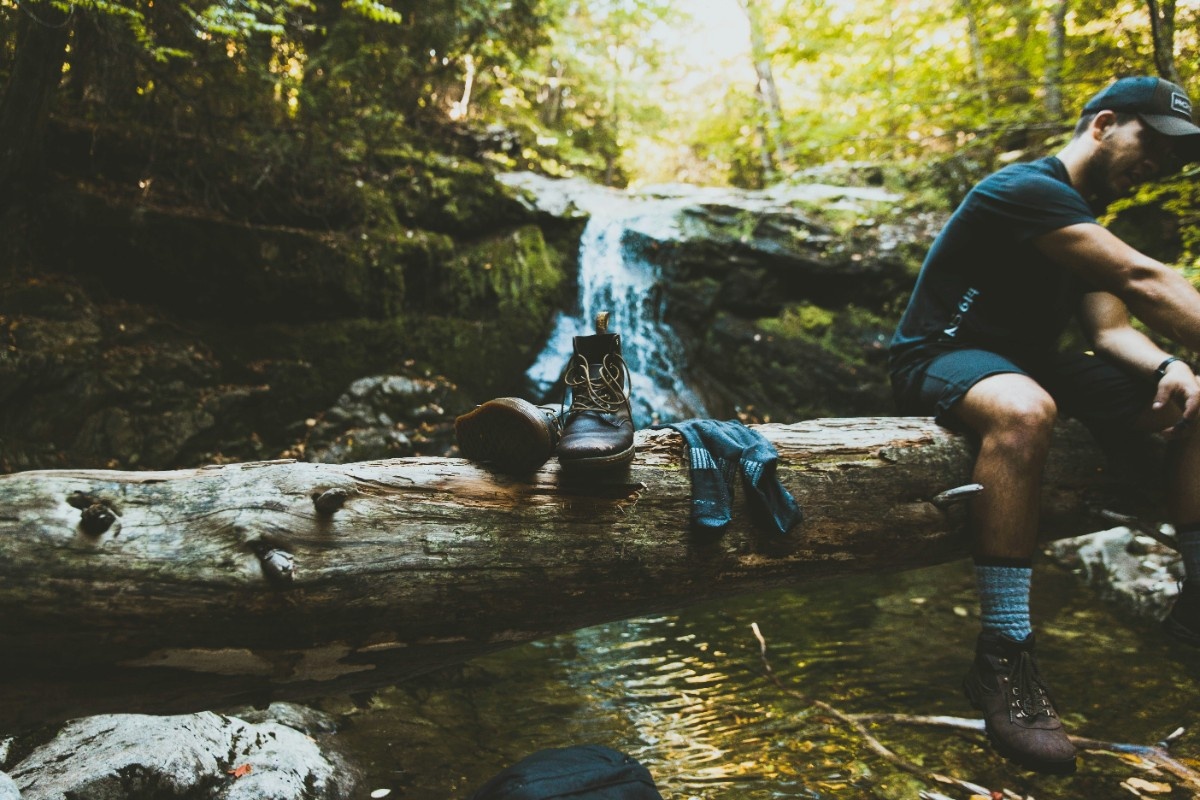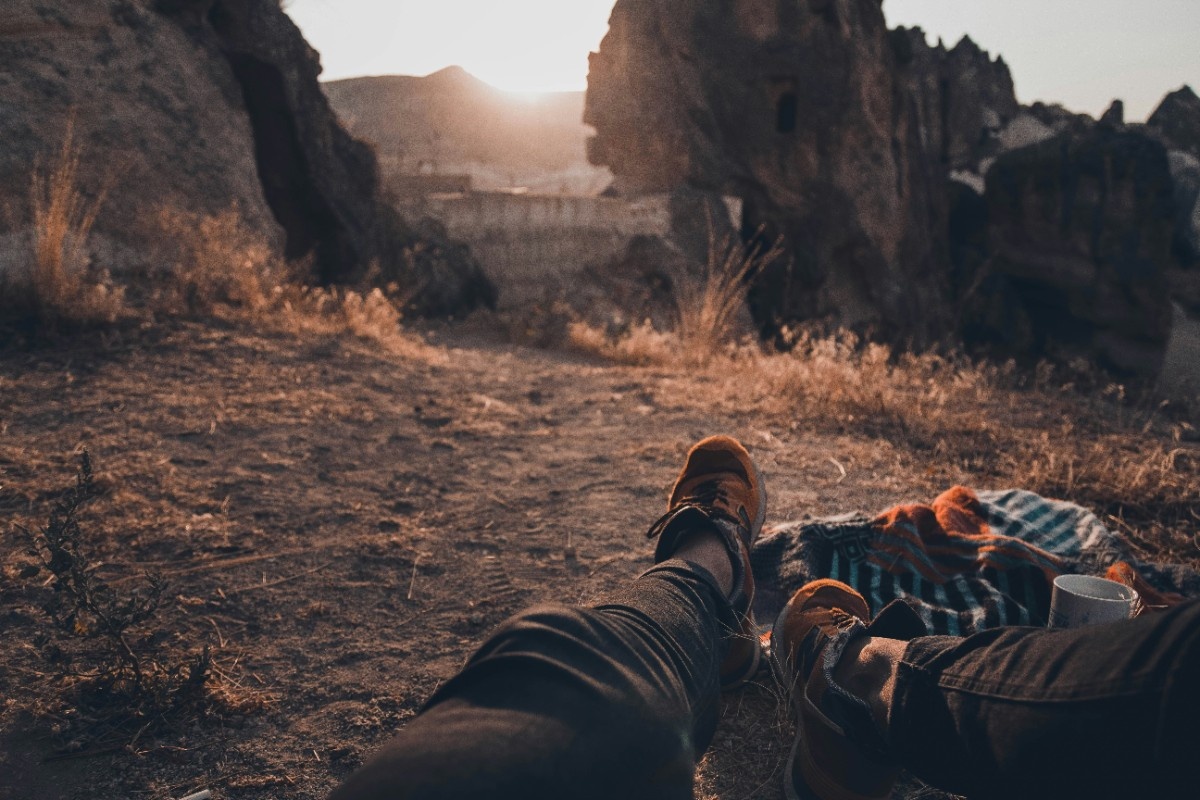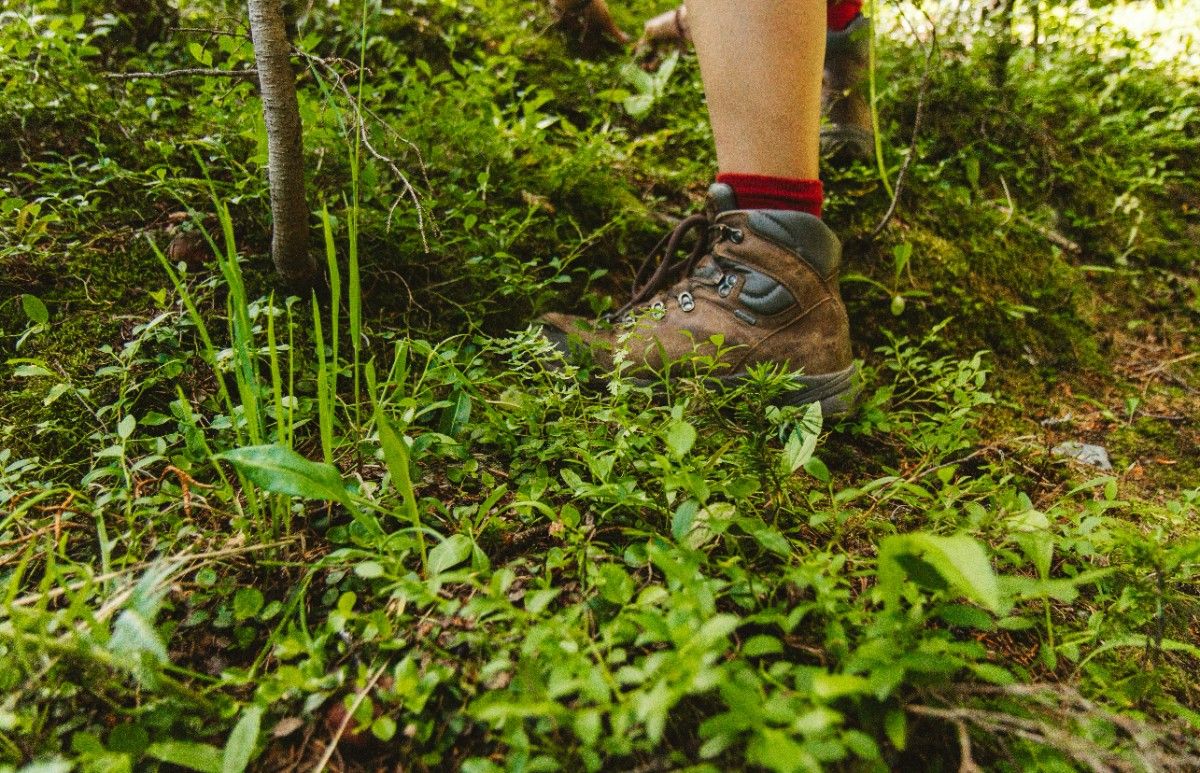The Anatomy of Hiking Socks: Understanding What Sets Them Apart
Cushioning and Padding
Hiking socks are designed with strategic cushioning and padding that set them apart from regular socks. This extra cushioning is typically found in high-impact areas such as the heel, ball of the foot, and toes. The purpose of this targeted padding is to absorb shock, reduce friction, and provide comfort during long hikes.
Hiking socks for men and hiking socks for women often feature slightly different cushioning patterns to account for the variations in foot shape and pressure points between genders. For example, women's hiking socks might have extra cushioning in the heel area to accommodate the typically narrower female heel.
The level of cushioning can vary from light to heavy, depending on the intended use of the sock. Lightweight cushioning is often preferred for summer hiking socks, while heavier cushioning is common in socks designed for more challenging terrain or colder conditions. Some great hiking socks even incorporate different levels of cushioning in various zones of the sock to optimise comfort and performance.
Moisture Management
One of the key features that distinguish hiking socks from regular socks is their superior moisture management capabilities. Good hiking socks are designed to wick moisture away from the skin, keeping feet dry and comfortable even during strenuous hikes. This moisture-wicking property is crucial for preventing blisters, which are often caused by the combination of moisture and friction.
Merino wool hiking socks are particularly renowned for their excellent moisture management properties. Merino wool can absorb up to 30% of its weight in moisture without feeling wet to the touch, making it an ideal material for hiking socks. Synthetic materials like polyester and nylon are also commonly used in hiking socks for their quick-drying properties.
Many best hiking socks combine natural and synthetic fibres to optimise moisture management. Some advanced hiking socks even incorporate ventilation channels or mesh panels in areas prone to sweating, such as the top of the foot, to enhance breathability and moisture control.
Fit and Support
The fit of hiking socks is another crucial aspect that sets them apart from regular socks. Both women’s and men’s hiking socks are designed to provide a snug, contoured fit that prevents bunching and slipping inside the boot. This precise fit is essential for preventing blisters and ensuring comfort during long hikes.
Many hiking socks feature extra support in the arch area, which can help reduce foot fatigue and provide additional comfort. Some hiking socks incorporate compression features in certain areas, such as the arch or the entire sock, which can help improve blood flow and reduce swelling in the feet and ankles.
The height of hiking socks is also an important consideration. While everyday socks might be ankle-height or lower, hiking socks come in various heights to suit different types of hiking boots and conditions. Crew-length socks that reach mid-calf are common for hiking, as they provide protection against brush and help prevent debris from entering the boots.
Materials Matter: The Science Behind Hiking Sock Fabrics
Merino Wool: Nature's Performance Fibre
Merino wool hiking socks have gained a devoted following among outdoor enthusiasts, and for good reason. Merino wool is a natural fibre that offers an impressive array of performance benefits, making it an ideal material for hiking socks.
One of the most notable properties of merino wool is its excellent temperature regulation. The natural crimp in merino wool fibres creates tiny air pockets that trap warm air in cold conditions, keeping your feet cosy. Conversely, in warm weather, these same air pockets allow heat to escape, helping to keep your feet cool. This makes merino wool hiking socks suitable for a wide range of temperatures and conditions, from chilly mountain trails to warm summer hikes.
Merino wool also excels in moisture management, a crucial factor in preventing blisters and maintaining foot comfort during long hikes. The fibres can absorb up to 30% of their weight in moisture without feeling wet to the touch. This moisture is then gradually released through evaporation, helping to keep your feet dry and comfortable.
Another significant advantage of merino wool is its natural antimicrobial properties. The fibres contain lanolin, a natural waxy substance that inhibits the growth of odour-causing bacteria. This means that merino hiking socks can remain fresher for longer, even during multi-day hikes.
Despite these impressive properties, merino wool does have some drawbacks. Pure merino wool socks can be less durable than synthetic options and may take longer to dry when thoroughly soaked. They also tend to be more expensive than socks made from other materials. However, many hikers find that the comfort and performance benefits of merino wool outweigh these considerations.
Synthetic Fabrics: Engineered for Performance
While natural fibres like merino wool have their advantages, synthetic materials have carved out their own niche in the world of hiking socks. The most common synthetic materials used in hiking socks are polyester and nylon, each offering unique benefits.
Polyester is known for its excellent moisture-wicking properties. It's hydrophobic, meaning it repels water, which allows it to draw moisture away from the skin and push it to the outer layer of the sock where it can evaporate quickly. This makes polyester an excellent choice for hiking socks for men and women who tend to have sweaty feet or who hike in warm, humid conditions.
Nylon, on the other hand, is prized for its durability and strength. It's often blended with other materials to add longevity to the sock. Nylon also has good moisture-wicking properties, though not quite as effective as polyester.
One of the main advantages of synthetic hiking socks is their quick-drying nature. If your feet get wet during a stream crossing or in rainy conditions, synthetic socks will dry much faster than their natural fibre counterparts. This can be crucial for preventing blisters and maintaining comfort on multi-day hikes.
Synthetic materials are also generally more durable than natural fibres. They can withstand more wear and tear, making them a good choice for hikers who are tough on their gear or who prioritise longevity in their socks.
However, synthetic materials do have some drawbacks. They don't regulate temperature as effectively as merino wool, which can be a disadvantage in variable conditions. They also tend to retain odours more readily than natural fibres, which can be an issue on longer hikes.
Blended Fabrics: The Best of Both Worlds
Many of the best hiking socks on the market today are made from a blend of different materials, combining the benefits of both natural and synthetic fibres. These blended socks aim to provide the optimal balance of comfort, performance, and durability.
A common blend is merino wool with nylon and a small percentage of elastane or spandex. The merino wool provides comfort, moisture-wicking, and temperature regulation, while the nylon adds durability and helps the sock maintain its shape. The elastane or spandex gives the sock stretch, ensuring a snug fit that doesn't slip or bunch inside your boot.
Some socks might use a synthetic interior layer for moisture-wicking, combined with a merino wool exterior for comfort and temperature regulation. Others might use different blends in different parts of the sock, tailoring the material mix to the specific needs of each area of the foot.
Blended fabrics often offer the best performance for a wide range of conditions, making them a versatile choice for hikers. They can provide the comfort and odour-resistance of natural fibres with the durability and quick-drying properties of synthetics.
However, it's worth noting that not all blends are created equal. The quality of the materials used and the specific ratio of different fibres can greatly affect the performance of the sock. When choosing blended hiking socks, it's important to look at the specific materials used and their percentages, as well as reading reviews from other hikers to get a sense of real-world performance.
Choosing the Right Hiking Socks: Factors to Consider
Hiking Style and Duration
The type of hiking you plan to do should be a primary consideration when choosing your hiking socks. Different hiking styles and durations place different demands on your feet and, consequently, on your socks.
For short day hikes on well-maintained trails, lightweight hiking socks might be sufficient. These socks, often made from synthetic materials or thin merino wool, provide basic cushioning and moisture-wicking without adding unnecessary bulk. They're ideal for summer hiking socks when breathability is key.
For longer day hikes or more challenging terrain, midweight hiking socks are often a good choice. These socks, which could be merino wool hiking socks or a synthetic blend, offer more cushioning and support. They're versatile enough for a range of conditions and are a popular choice for hiking socks for men and women who want a do-it-all sock.
For multi-day backpacking trips or hikes in rugged terrain, heavyweight hiking socks might be the best option. These socks provide maximum cushioning and insulation, which can be crucial for comfort and blister prevention when you're on the trail for extended periods. Many great hiking socks in this category are made from thick merino wool or durable synthetic blends.
It's also worth considering bringing multiple pairs of socks for longer hikes. This allows you to change into fresh, dry socks midway through your hike, which can help prevent blisters and keep your feet comfortable.
Climate and Weather Conditions
The environment you'll be hiking in plays a crucial role in sock selection. Different materials and sock weights perform better in different conditions.
For hot weather hiking, lightweight, breathable socks are key. Look for thin merino hiking socks or synthetic socks with good moisture-wicking properties. Some hikers prefer socks for summer hiking that are shorter in height to allow for better ventilation.
In cold conditions, thicker socks made from insulating materials like merino wool are often the best choice. These socks help to trap warm air around your feet, keeping them comfortable even in chilly temperatures.
For wet conditions, consider the benefits of waterproof hiking socks. While not necessary for all hikes, they can be invaluable in consistently wet environments or for hikes involving multiple stream crossings.
It's also worth thinking about variability in conditions. If you're hiking in an area known for rapid weather changes, or if your route involves significant elevation changes, consider socks that offer good all-round performance in a range of temperatures.
Boot Compatibility and Fit
Your choice of hiking socks should complement your hiking boots or shoes. The thickness of your socks can affect the fit of your boots, so it's important to choose socks that work well with your footwear.
If you have boots with a roomy toe box, thicker socks might help fill out the extra space and prevent your foot from sliding around inside the boot. Conversely, if your boots fit snugly, thinner socks might be necessary to avoid compression and maintain circulation.
The height of your socks should also match your boots. For high-top hiking boots, crew-length socks that extend above the boot collar are usually best to prevent rubbing and blisters. For low-cut hiking shoes, ankle-height socks might be sufficient.
Remember to try on your hiking boots with the socks you plan to wear on the trail. This ensures you get an accurate sense of how the complete system - foot, sock, and boot - will perform together.
Personal Preferences and Foot Characteristics
While there are general guidelines for choosing hiking socks, personal preference plays a significant role. Some hikers prefer the soft feel of merino wool against their skin, while others like the snug fit of synthetic socks.
Consider any specific foot characteristics or issues you might have. If you have wide feet, look for socks with a roomier toe box. If you're prone to blisters in certain areas, seek out socks with extra cushioning in those spots.
Some hikers prefer a uniform cushion throughout the sock, while others like variable cushioning with more padding in high-impact areas. Smartwool hiking socks, for example, often feature targeted cushioning in the heel and ball of the foot.
If you have issues with foot odour, merino wool or socks with antimicrobial treatments might be a good choice. If you have circulation issues, consider socks with light compression features.
Ultimately, finding the right hiking socks often involves some trial and error. Don't be afraid to try different styles and materials to find what works best for you. Remember, the best socks to wear hiking are the ones that keep your feet comfortable and blister-free on the trail.
Hiking Socks for Every Season: Adapting to Weather and Conditions
Summer Hiking Socks: Keeping Cool When the Heat is On
When the mercury rises, choosing the right summer hiking socks becomes crucial for foot comfort and blister prevention. The primary goals for summer hiking socks are moisture management and breathability, ensuring your feet stay dry and cool even in hot conditions.
Lightweight socks are typically the best choice for summer hiking. These socks are thinner, allowing for better air circulation around your feet. Many hikers prefer socks for summer hiking made from merino wool, despite wool's association with warmth. Merino wool has excellent temperature-regulating properties, keeping your feet cool in hot weather while also wicking away moisture effectively.
For example, the Smartwool PhD Outdoor Ultra Light Mini socks are an excellent choice for summer hikes. These Smartwool hiking socks are made from a blend of merino wool, nylon, and elastane, offering superb breathability and moisture control. The mini height is perfect for low-cut hiking shoes, allowing for maximum ventilation.
Synthetic materials also perform well in summer conditions. Socks made from materials like Coolmax polyester are designed to keep your feet cool and dry in hot weather.
In terms of sock height, many summer hikers prefer lower-cut socks for increased airflow around the ankles. However, if you're hiking in areas with lots of loose debris or scratchy vegetation, a crew-length sock might still be preferable to protect your ankles.
Remember, even in summer, it's wise to carry a spare pair of socks on longer hikes. This allows you to change into dry socks if your feet get sweaty, helping to prevent blisters and maintain comfort throughout your hike.
Winter Hiking Socks: Insulation for Chilly Adventures
When the temperature drops, keeping your feet warm becomes a top priority. Winter hiking socks need to provide excellent insulation while still managing moisture effectively to prevent your feet from getting cold and damp.
For cold weather hiking, thicker socks made from insulating materials are often the best choice. Merino wool hiking socks are particularly popular for winter use due to their excellent insulating properties, even when damp. The natural crimp in merino wool fibres creates tiny air pockets that trap warm air, keeping your feet cosy in cold conditions.
The Smartwool Trekking Heavy Crew socks are a top choice for cold weather hiking. Made from a thick blend of merino wool, nylon, and elastane, these socks provide excellent warmth and cushioning. The high wool content helps to regulate temperature and wick moisture, keeping your feet warm and dry even in challenging conditions.
For extreme cold, some hikers prefer a two-sock system. This typically involves a thin liner sock worn under a thicker outer sock. The liner sock, often made from synthetic materials or silk, wicks moisture away from the skin, while the outer sock provides insulation and cushioning. The Icebreaker Hike+ Light Crew sock works well as a liner, providing a base layer of merino wool for moisture management. This can be paired with a heavier outer sock for maximum warmth and protection.
In winter conditions, it's particularly important to choose socks that work well with your winter hiking boots. Make sure your socks aren't so thick that they compress your toes in your boots, as this can restrict circulation and actually make your feet colder.
Spring and Autumn Hiking Socks: Versatility for Changing Conditions
The transitional seasons of spring and autumn can present varied conditions, from cool mornings to warm afternoons. For these seasons, versatile, mid-weight socks are often the best choice.
The Bridgedale Hike Midweight Performance Boot sock is an excellent option for spring and autumn hiking. Made from a blend of merino wool, nylon, and Lycra, these socks offer a good balance of warmth, moisture-wicking, and durability. The midweight cushioning provides comfort for longer hikes without being too warm for mild conditions.
In spring and autumn, it's particularly important to be prepared for changing conditions. Consider carrying a spare pair of socks with a different weight or material composition. This allows you to adapt to temperature changes throughout your hike, ensuring your feet stay comfortable regardless of the weather.
Caring for Your Hiking Socks: Maintenance Tips for Longevity
Proper Washing Techniques
Proper washing is crucial for maintaining the performance and longevity of your hiking socks, whether they're merino wool hiking socks or synthetic blends. By following the right washing techniques, you can ensure your socks continue to provide comfort and protection hike after hike.
First and foremost, always turn your socks inside out before washing. This allows the washing machine to clean the areas that come into direct contact with your feet more effectively. It also helps protect the outer surface of the sock from excessive wear during the wash cycle.
Use a mild detergent, preferably one designed for technical or wool garments. Avoid using fabric softeners, as these can coat the fibres and reduce their moisture-wicking and breathability properties. This is particularly important for merino hiking socks, as fabric softeners can compromise the natural properties of the wool.
When it comes to water temperature, cold or warm water is generally best. Hot water can damage the fibres and cause shrinkage, especially in wool socks. For merino wool hiking socks, consider hand washing or using the delicate cycle on your washing machine to prevent felting and extend the life of the socks.
If your socks are particularly dirty or smelly after a long hike, you can pre-soak them in a mixture of cool water and white vinegar (about 1 cup of vinegar per 4 litres of water) for 30 minutes before washing. This can help remove odours and break down dirt and oils.
After washing, avoid wringing out your socks, as this can damage the fibres and affect the shape of the sock. Instead, gently squeeze out excess water.
Proper Drying Methods
How you dry your hiking socks can significantly impact their lifespan. Improper drying can lead to shrinkage, loss of shape, and damage to the fibres.
Air drying is generally the best option for all types of hiking socks. Hang them or lay them flat to dry naturally. This method is gentler on the fibres and helps maintain the shape and fit of the socks. It's particularly important for wool hiking socks, which can shrink or felt if exposed to high heat.
If you must use a dryer, use a low heat setting. High heat can damage the fibres and reduce the elasticity of the socks. For merino wool socks, always air dry if possible. The heat and tumbling action of a dryer can cause shrinkage and felting, which can significantly reduce the lifespan of your socks.
Avoid drying your socks on direct heat sources like radiators, as this can damage the fibres and affect the fit of the socks. If you need to speed up the drying process, you can stuff the socks with newspaper to absorb moisture, changing the paper as it becomes damp.
Between-Hike Care
Proper care between hikes can help maintain your socks and prepare them for your next adventure. This is especially important for maintaining the performance of great hiking socks over time.
Always allow your socks to dry completely between uses. This helps prevent the growth of bacteria and fungi that can cause odours and deteriorate the fabric. If possible, turn your socks inside out and air them out after each use, even if they don't feel particularly damp.
If possible, rotate between multiple pairs of socks. This allows each pair to fully dry and recover its shape between uses, potentially extending the overall life of your sock collection. It's a good practice to have several pairs of hiking socks for men or women, allowing you to always have a fresh pair ready for your next hike.
Store your socks in a cool, dry place. Avoid storing them in plastic bags or airtight containers, as this can trap moisture and lead to mildew growth. Instead, store them in a breathable fabric bag or simply in your dresser drawer.
For wool hiking socks, consider storing them with cedar blocks or lavender sachets. These natural moth repellents can help protect your wool socks from insect damage during storage.
Addressing Wear and Tear
Even with proper care, hiking socks will eventually show signs of wear. Knowing how to address these issues can help extend the life of your socks.
For small holes or thin spots, consider darning your socks. This traditional mending technique can extend the life of your socks significantly. Many outdoor gear repair shops offer this service if you're not comfortable doing it yourself.
If the elastic in the cuff of your socks starts to wear out, causing them to slip down during use, it's generally time to replace the socks. Slipping socks can lead to blisters and discomfort on the trail.
Some brands, like Darn Tough, offer lifetime warranties on their socks. If your socks wear out under normal use, you may be able to get them replaced for free. This can be a great way to ensure you always have good hiking socks ready for your adventures.
By following these care and maintenance tips, you can significantly extend the life of your hiking socks, ensuring they continue to provide comfort and protection on the trail for many adventures to come. Remember, well-maintained socks not only last longer but also perform better, keeping your feet comfortable and blister-free on your hikes.
Frequently Asked Questions About Hiking Socks
Q: How many pairs of socks should I bring on a multi-day hike?
A: As a general rule, it's recommended to bring at least one pair of socks for each day of hiking, plus an extra pair. This allows you to change into fresh, dry socks each day and have a spare pair in case of unexpected wetness or as a sleeping option. For longer trips, you might consider bringing a dedicated pair of lightweight socks for camp use to give your feet a break from your hiking socks.
Q: Can I wear regular socks for hiking?
A: While you can technically wear regular socks for hiking, it's not recommended. Hiking socks are specifically designed to provide cushioning, moisture management, and blister prevention that regular socks simply can't match. Investing in proper hiking socks can significantly improve your comfort on the trail and help prevent foot issues.
Q: Are expensive hiking socks worth the cost?
A: In general, yes. High-quality hiking socks often justify their higher price tag through superior performance, comfort, and durability. Brands like Smartwool and Bridgedale may cost more upfront, but they typically last longer and perform better than cheaper alternatives. Many hikers find that investing in good socks saves money in the long run by reducing the need for frequent replacements.
Q: Should I wear two pairs of socks while hiking?
A: Some hikers prefer a two-sock system, especially for long hikes or in cold conditions. This typically involves wearing a thin liner sock under a thicker outer sock. The liner wicks moisture away from the skin, while the outer sock provides insulation and cushioning. However, this system isn't necessary for everyone and can sometimes cause issues if your boots aren't sized to accommodate two pairs of socks. It's worth experimenting to see what works best for you.
Q: How often should I replace my hiking socks?
A: The lifespan of hiking socks can vary greatly depending on the quality of the socks, how often you use them, and how well you care for them. As a rough guide, many hikers find they need to replace their socks after about 300-500 miles of use. However, you should replace your socks sooner if you notice significant wear, loss of cushioning, or persistent odours that don't come out with washing.
Q: Are waterproof socks necessary for hiking?
A: Waterproof socks aren't necessary for most hiking conditions, but they can be very useful in certain situations. They're particularly valuable for hikes that involve multiple stream crossings, very wet conditions, or in cold, damp environments where keeping your feet dry is crucial for comfort and safety. However, waterproof socks tend to be less breathable than regular hiking socks, which can lead to sweaty feet in warmer conditions. For most hikes, good quality moisture-wicking socks paired with waterproof boots or gaiters will suffice.
Q: Can I use hiking socks for other activities?
A: Absolutely! Many people find that they enjoy wearing hiking socks for various activities beyond hiking. They can be great for everyday wear, especially if you're on your feet a lot. Many runners use hiking socks for long-distance runs, and they're popular among workers who spend long hours on their feet. The cushioning and moisture-wicking properties that make them great for hiking translate well to many other activities.
Q: How do I choose between synthetic and merino wool hiking socks?
A: Both synthetic and merino wool socks have their advantages. Merino wool is excellent for temperature regulation, odour resistance, and comfort, making it a great all-round choice. Synthetic socks often dry faster and can be more durable, which some hikers prefer. Many of the best hiking socks actually use a blend of materials to combine the benefits of both. Your choice might depend on personal preference, the climate you're hiking in, and the length of your hikes.
Q: Are compression socks good for hiking?
A: Some hikers find compression socks beneficial, especially for long hikes or when hiking at high altitudes. Compression socks can help improve blood circulation, reduce swelling, and potentially aid in recovery. However, they're not necessary for everyone and some hikers find them uncomfortable. If you're interested in trying compression socks for hiking, it's worth starting with a shorter hike to see how your feet respond.
Q: How do I prevent blisters when hiking?
A: Good hiking socks are a crucial part of blister prevention, but they're not the only factor. Here are some tips:
- Ensure your boots fit properly.
- Wear moisture-wicking socks that fit well without bunching.
- Keep your feet dry - change socks if they get wet from sweat or water crossings.
- Consider using a liner sock under your hiking socks.
- Break in new boots gradually before a long hike.
- Address hot spots immediately with moleskin or tape.
- Trim your toenails before hiking.
Q: Can I wear the same socks for warm and cold weather hiking?
A: While it's possible to use the same socks year-round, many hikers prefer to have different socks for different seasons. Lightweight, breathable socks are ideal for summer hiking, while thicker, more insulating socks are better for cold weather. Midweight socks can be a good compromise for year-round use in moderate climates. The key is to choose socks that keep your feet at a comfortable temperature and manage moisture effectively for the conditions you're hiking in.
Q: How do I care for my feet on multi-day hikes?
A: Proper foot care is crucial on long hikes. Here are some tips:
- Change into clean, dry socks daily.
- Air out your feet and socks during breaks.
- Treat hot spots and blisters promptly.
- Keep your toenails trimmed.
- Consider applying foot powder to help keep your feet dry.
- Massage your feet at the end of each day to promote circulation.
- If possible, rinse and thoroughly dry your feet each evening.
Q: How do I know if my hiking socks fit properly?
A: Properly fitting hiking socks should feel snug but not tight. They shouldn't bunch up or have excess material that could cause friction. The heel of the sock should align with your heel, and there shouldn't be any loose material around the toes. If you're trying on hiking boots, always wear the type of socks you plan to hike in to ensure a proper fit.
Related Articles

Let us know you agree to cookies
We use marketing, analytical and functional cookies as well as similar technologies to give you the best experience. Third parties, including social media platforms, often place tracking cookies on our site to show you personalised adverts outside of our website.
We store your cookie preferences for two years and you can edit your preferences via ‘manage cookies’ or through the cookie policy at the bottom of every page. For more information, please see our cookie policy.







